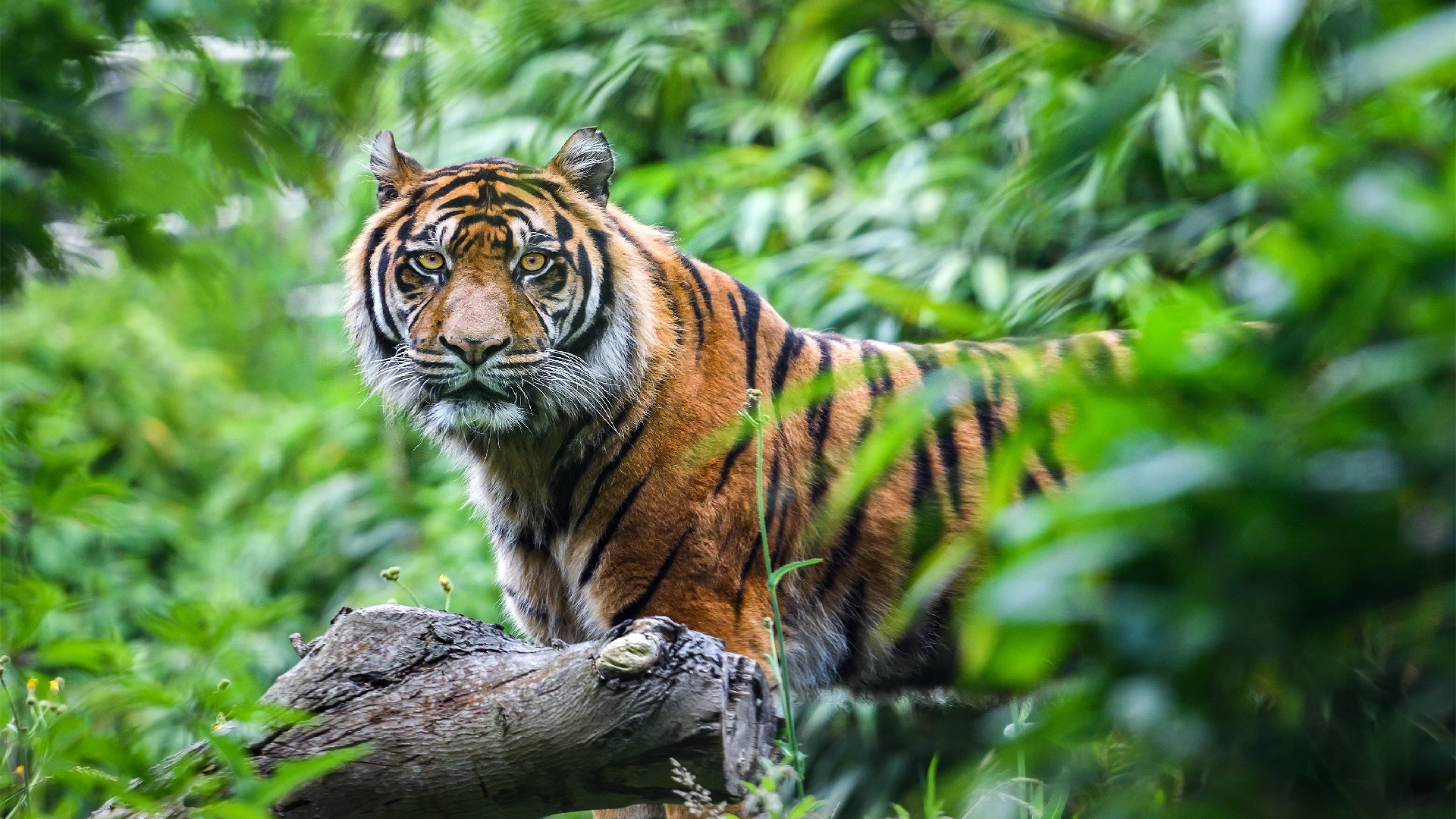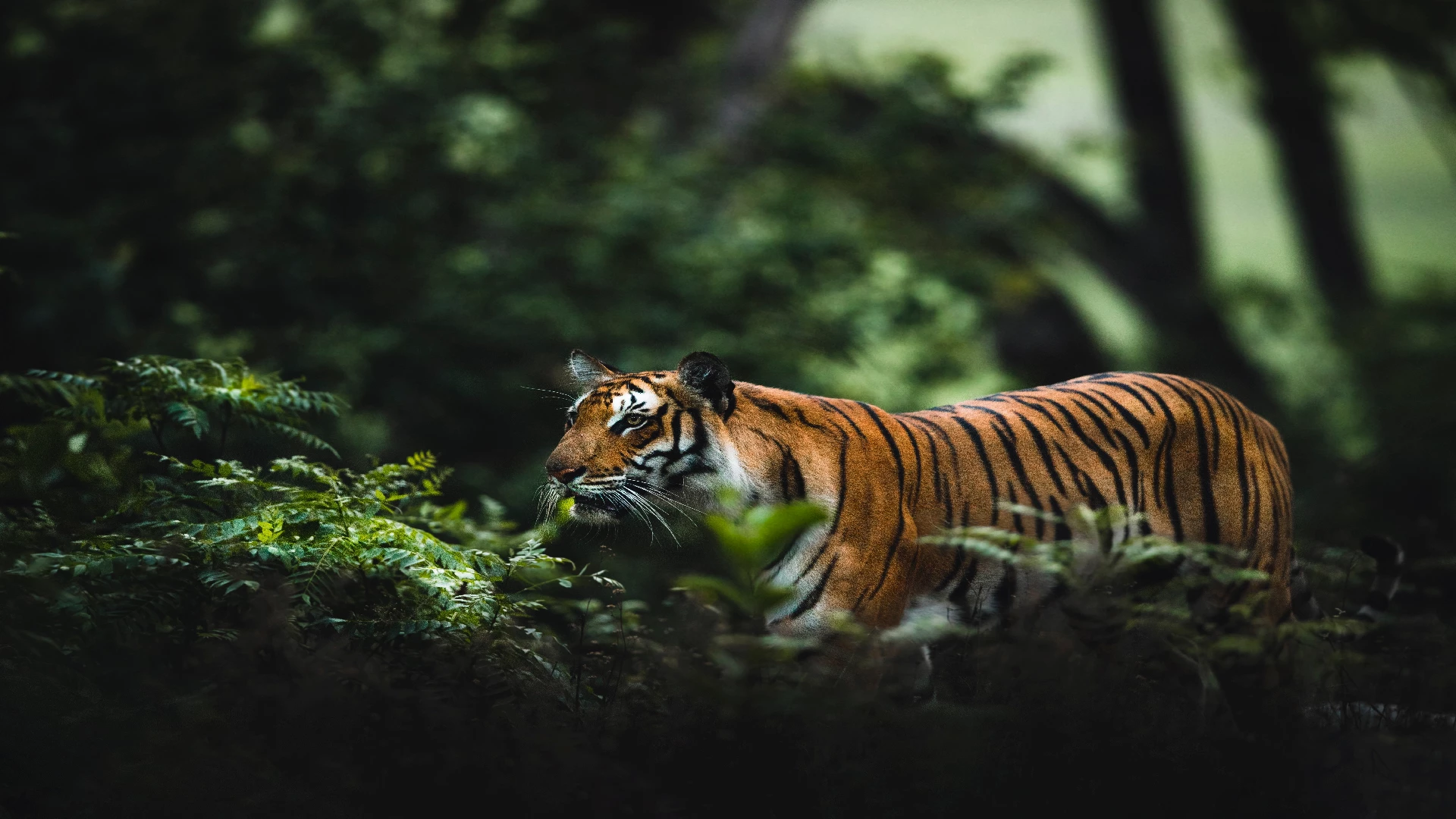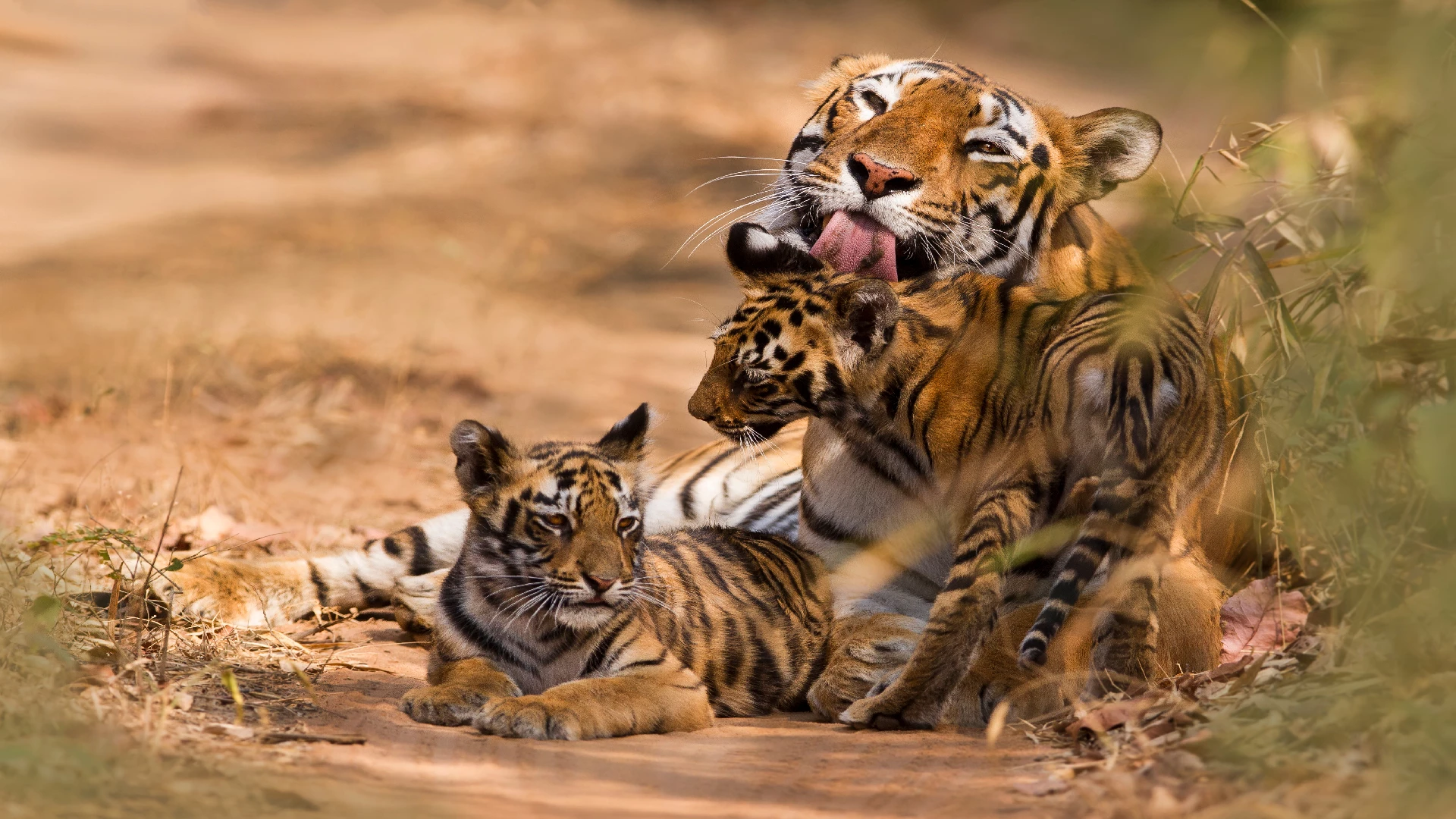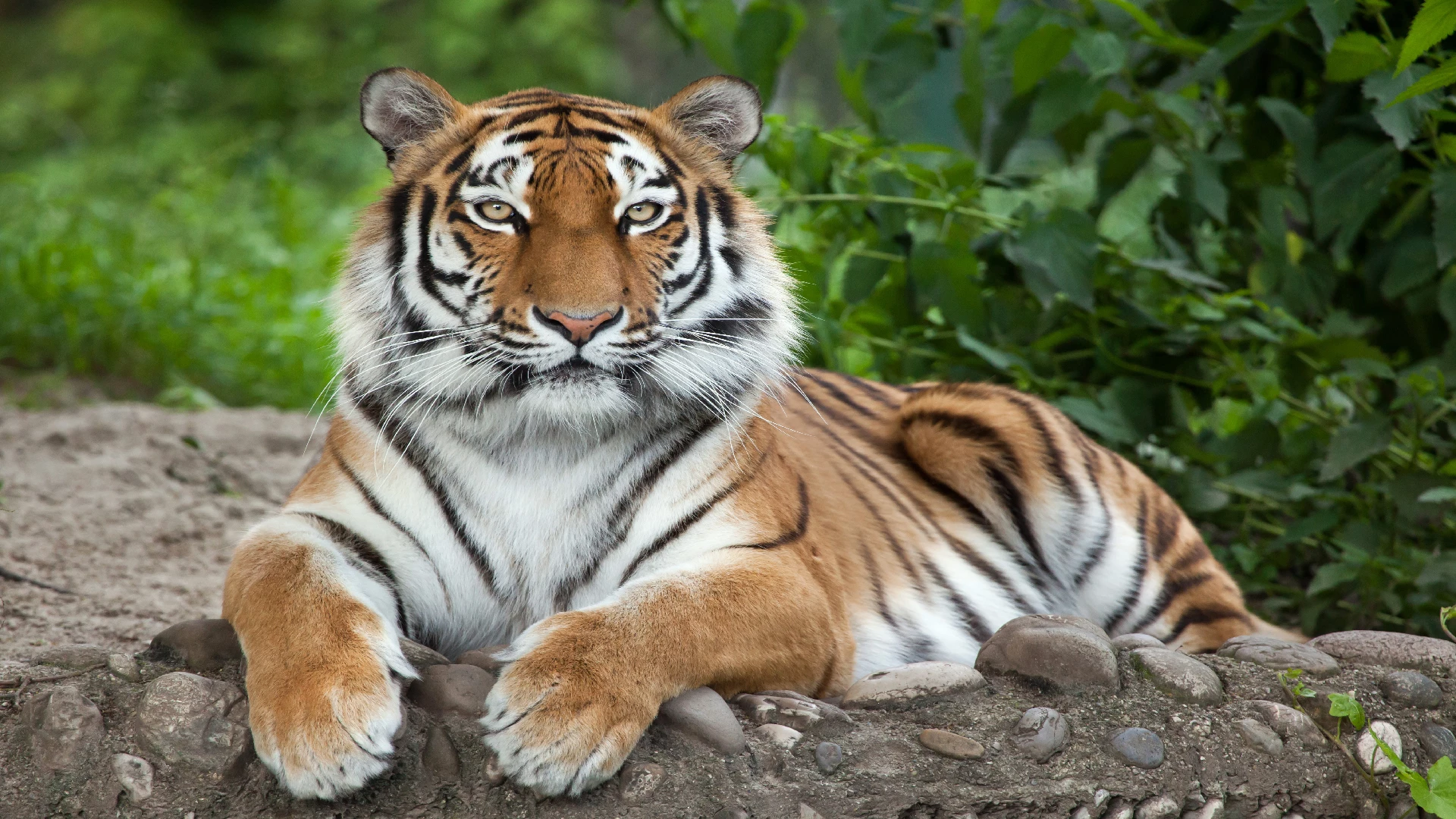Tigers, majestic and powerful, stand as a symbol of strength and beauty in the wild. Yet, these remarkable creatures face numerous challenges that threaten their existence. In this exploration, we’ll delve into the diverse aspects of the world of tigers, from their habitats and behaviors to the critical need for conservation efforts to safeguard their future.
Unleash the Tiger’s Roar: Explore in a New Tab 🐅
1. The Tiger: A Closer Look
 Tigers are the largest of the cat species, with their distinctive orange coat and black stripes making them instantly recognizable. There are several subspecies, such as the Bengal, Siberian, Sumatran, and Malayan tigers, each uniquely adapted to their habitats. Unfortunately, several subspecies, like the Javan and Bali tigers, have already gone extinct.
Tigers are the largest of the cat species, with their distinctive orange coat and black stripes making them instantly recognizable. There are several subspecies, such as the Bengal, Siberian, Sumatran, and Malayan tigers, each uniquely adapted to their habitats. Unfortunately, several subspecies, like the Javan and Bali tigers, have already gone extinct.
- Habitats: Tigers primarily inhabit forests, grasslands, and swamps across Asia. Their adaptability to various ecosystems allows them to thrive in diverse landscapes, from the tropical forests of India to the snowy expanses of Siberia.
- Behaviors: Solitary in nature, tigers are exceptional hunters and can take down prey significantly larger than themselves. They are predominantly nocturnal, relying on their exceptional vision and stealth to hunt under the cover of darkness.
2. The Plight of Tigers: Conservation Challenges
 Despite their prowess, tigers face numerous threats that endanger their existence. Habitat loss, poaching, and human-wildlife conflict have led to a drastic decline in tiger populations.
Despite their prowess, tigers face numerous threats that endanger their existence. Habitat loss, poaching, and human-wildlife conflict have led to a drastic decline in tiger populations.
- Habitat Loss: Deforestation and human encroachment shrink the natural habitats of tigers, forcing them into smaller territories and leading to increased human-tiger conflicts.
- Poaching: The demand for tiger parts in traditional medicine and illegal wildlife trade continues to threaten these big cats. Their skins, bones, and other body parts are highly valued, driving poaching activities.
- Human-Wildlife Conflict: As human populations expand, conflicts arise between tigers and local communities. Tigers may attack livestock or, in rare cases, humans, leading to retaliatory killings that further endanger their populations.
3. The Importance of Tiger Conservation Efforts
 Conservation efforts are crucial to the survival of these magnificent creatures. Various organizations and governments have stepped up to protect tigers through initiatives aimed at habitat preservation, anti-poaching measures, and community involvement.
Conservation efforts are crucial to the survival of these magnificent creatures. Various organizations and governments have stepped up to protect tigers through initiatives aimed at habitat preservation, anti-poaching measures, and community involvement.
- Protected Areas and Reserves: Establishing protected areas and reserves ensures safe havens for tigers to thrive. National parks like Ranthambore in India and the Russian Far East are critical for their survival.
- Anti-Poaching Measures: Stricter law enforcement, wildlife crime monitoring, and community engagement play pivotal roles in combatting poaching activities, thus safeguarding tigers.
- Community Involvement: Engaging local communities in conservation efforts fosters a sense of ownership and encourages sustainable practices. Programs that provide alternative livelihoods and education contribute significantly to tiger protection.
4. Encouraging Signs and Success Stories
 While challenges persist, there are encouraging signs and success stories that give hope for the future of tigers.
While challenges persist, there are encouraging signs and success stories that give hope for the future of tigers.
- Population Increase: In some areas, conservation efforts have shown positive results. For instance, the tiger population in India has increased, with an estimated 2,967 tigers in the country as per the latest census.
- Reintroduction Programs: Initiatives like the rewilding and reintroduction of tigers into suitable habitats have been successful in regions where they were previously extinct.
- International Cooperation: Collaboration among countries through organizations like the Global Tiger Forum and conservation groups has led to joint efforts in protecting these majestic animals.
5. The Significance of Tigers in Ecosystems
 Tigers are apex predators, playing a crucial role in maintaining the balance of ecosystems. Their presence helps control prey populations, which, in turn, influences vegetation and the overall health of their habitats.
Tigers are apex predators, playing a crucial role in maintaining the balance of ecosystems. Their presence helps control prey populations, which, in turn, influences vegetation and the overall health of their habitats.
6. A Call to Action
 The fate of tigers hangs in the balance, and the responsibility to ensure their survival lies with us. By supporting conservation efforts, spreading awareness, and advocating for stronger protection measures, we can secure a future where these iconic animals continue to roam the wild. Let’s join hands to protect the majestic tigers and preserve the richness of our natural world for generations to come.
The fate of tigers hangs in the balance, and the responsibility to ensure their survival lies with us. By supporting conservation efforts, spreading awareness, and advocating for stronger protection measures, we can secure a future where these iconic animals continue to roam the wild. Let’s join hands to protect the majestic tigers and preserve the richness of our natural world for generations to come.
Unleash the Tiger’s Roar: Explore in a New Tab 🐅










